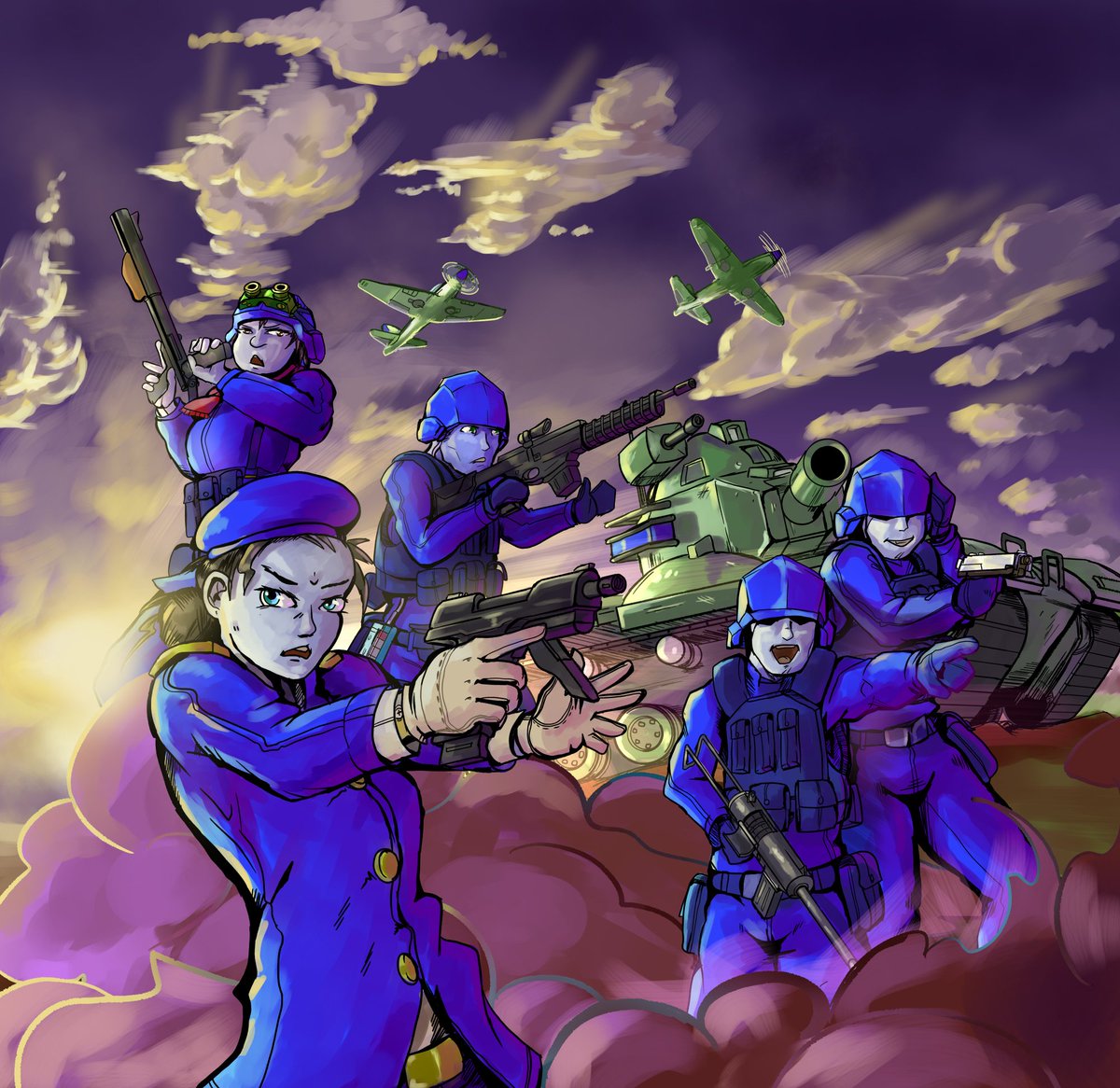
Ravenfield Twitter Full Version GametrexAbout Ravenfield
A Gauss Flayer is a type of Necron Gauss Weapon that can strip a target down to nothing molecule by molecule, reducing it to its constituent atoms in a matter of seconds. Gauss Flayers are rifle-like weapons consisting of a stock, a transparent tube. Ravenfield Download game Ravenfield (v) – Repack-Games Full Version GametrexAbout Ravenfield. Ravenfield is a singleplayer first-person shooter created by SteelRaven7 ( Johan Hassel ).

Guns, and active ragdoll physics Ravenfield is a singleplayer game in the vein of older team-vs-team AI shooters. The game is designed to be easy to pick up and play, but also rewarding for all skill levels Easy-to-pickup, singleplayer mayhem Fight as infantry, or in ground vehicles, aircraft, Ravenfield Free Download PC Game Repack-Games.com.The number of combatants is only limited by what your computer can handle Damaged soldiers drop team-colored blood splats, indicating where battles have taken place Development Roadmap Ravenfield is being developed as an early access game, with major content updates scheduled to be released every 4-6 weeks. Block the game’s exe in your firewall to prevent the game from trying to go online Detail game:Some games need to perform the following steps, to avoid problems when running the game Additionally, incremental updates are distributed via a beta branch for those who do not fear slightly more buggy releases.
West Nile Delta (WND) project development planA total of nine production wells were drilled for the Taurus and Libra gas fields during the first phase. The new fields and future exploration activities are expected to further boost production from WND by an additional five tcf to seven tcf.“The overall investment for phase one was $12bn.”Peak production from the project in 2019 is expected to reach 1.4 billion cubic feet a day (bcf/d) of gas, which is equivalent to approximately 20% of Egypt’s current gas production. WND reserves and productionBP and DEA will develop five trillion cubic feet (tcf) of gas and 55 million barrels (mmbbl) of condensate reserves from three phases of the WND project. First gas was delivered to the national grid ahead of schedule in March 2017.First gas from the Giza and Fayoum fields was achieved in February 2019, while the Raven gas field is expected to commence production by the end of 2019. The overall investment for phase one was $12bn.Construction of the first phase started in February 2017 and production from the Taurus and Libra fields commenced in May 2017. The first phase involved the development of Taurus and Libra gas fields, and the second saw the development of the Giza and Fayoum fields.Raven field will be developed in the third phase, while the Maadi, Viper, Ruby, Polaris and Hodoa discoveries will be developed in later phases.The West Nile Delta project is being co-developed by BP (82.75%) and DEA (Deutsche Erdoel AG) (17.25%).In March 2015, the two partners signed final project agreements with the Egyptian Minister of Petroleum, the Egyptian General Petroleum Corporation and the Egyptian Natural Gas Holding Company.
West Nile Delta fields discoveryThe Taurus, Libra and Fayoum fields were discovered in 20. The Raven field will be connected to a new onshore plant adjacent to the existing Rosetta plant.BP and DEA signed an agreement with BG Egypt in March 2015, under which the operational rights of the onshore facilities at Rosetta was transferred to the former two companies starting from mid-2016. The fields have an initial production capacity of 400MMscfd, which will be further increased up to 700MMscfd by April 2019.The Taurus and Libra fields are connected to existing Burullus facilities operated by Burullus Gas (BG), whereas the Giza and Fayoum fields are tied back to the existing Rosetta plant onshore, which is modified to accommodate additional production.
The Raven and Taurus Deep discoveries hold gas resources in the deeper Miocene formations, and the Hodoa discovery holds gas resources within the Oligocene formations. GeologyThe Giza, Taurus, Libra, Fayoum, Maadi, Viper, Polaris and Ruby fields hold gas resources within the Pliocene formations. The Raven 1X exploration well, drilled at a water depth of approximately 650m, flowed at rates up to 37.4 million cubic feet a day (mcf/d) of gas and 741 barrels of condensate a day during initial test.The Polaris discovery was made in July 2004 by drilling the Polaris 1X exploration well to a total depth of 2,178m.
The geochemical, sedimentological and micropalaeontological studies on two mud volcanoes located within the project site were performed by Leibniz Institute of Marine Sciences (IFM-GEOMAR) employing the research vessel FS Poseidon.Subsea 7 was contracted for the installation of subsea and topsides facilities for the project and Van Oord was subcontracted by Subsea 7 to carry out the installation of subsea rocks.Other key players involved in the project are YSF, Cameron, WorleyParsons, Hobbs Valve and Aker Solutions. The feasibility study for the project was earlier completed by Granherne, a consulting subsidiary of KBR.The geophysical and hydrographic surveys over the concessions were performed by Fugro, employing its M/V Western Shore vessel, M/V Geo Prospector and Echo Surveyor HUGIN 3000 autonomous underwater vehicle (AUV).


 0 kommentar(er)
0 kommentar(er)
